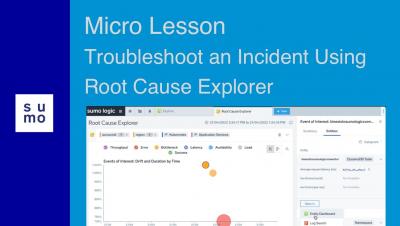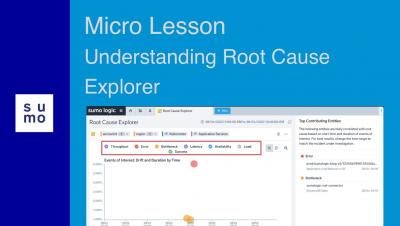Operations | Monitoring | ITSM | DevOps | Cloud
Logging
The latest News and Information on Log Management, Log Analytics and related technologies.
What is Kibana? (Updated Guide For 2022)
Kibana is a popular user interface used for data visualisation and for creating detailed reporting dashboards. This piece of software notably makes up a key part of the Elastic Stack alongside Elasticsearch and the extract, transform and load (ETL) tool, Logstash. In this comprehensive introduction to Kibana, we are covering all of the basics that you will need to know as a user considering using Kibana for your log data visualisation and reporting needs.
Micro Lesson: Troubleshoot an Incident Using Root Cause Explorer
Micro Lesson: Understanding Root Cause Explorer
Survey Review: Key Challenges of Scaling Observability with Cloud Workloads
When you migrated critical infrastructure to the cloud, what were your goals and expectations? Odds are, you hoped leaving on-premises infrastructure would produce significant organizational benefits. You probably figured you’d streamline operations and reduce management overhead. You felt you’d have an easier time meeting business goals. Perhaps most important of all, you likely expected your environment would become less complex, and even cost less to operate.
Smart, Secure and Sustainable Manufacturing - How Splunk and Google Cloud Are Helping Manufacturers to Skate Where the Puck is Going
* Co-author: Alexander Okl, Sr. Partner Development Manager EMEA | Google Cloud at Splunk “The way we look at manufacturing is this: the strategy should be to skate where the puck is going, not where it is.” - Tim Cook, CEO, Apple Inc.* So where is the puck going for manufacturers in 2022 and beyond?
Proactive Monitoring vs. Reactive Monitoring
Monitoring is a fundamental pillar of modern software development. With the advent of modern software architectures like microservices, the demand for high-performance monitoring and alerting shifted from useful to mandatory. Combine this with an average outage cost of $5,600 per minute, and you’ve got a compelling case for investing in your monitoring capability.
Where's Open Source Observability Headed in 2022?
For the last five years, Logz.io has tracked and measured the pulse of DevOps, as well as adoption of key trends and technology, through our DevOps Pulse survey and report. One of the obvious focus areas for us, as a company whose products are based on industry-leading open source, is the increased rise of incredibly useful open-source observability solutions, in general.
Protect the Business with Cribl Packs: Webinar Recap
The second in our Feature Highlights webinar series, Protect the Business with Cribl Packs, highlights Packs and security use cases. Packs enable you to share complex Stream/Edge configurations across multiple Worker Groups/Fleets, between Stream/Edge deployments or with the Cribl Community. Packs roll up best practices to ensure Site Reliability Engineering (SRE) teams have the required data to protect the business.
CI/CD Detection Engineering: Dockerizing for Scale, Part 4
Splunk builds innovative tools which enable users, their teams, and their customers to gather millions of data points per second from an ever-growing number of sources. Together, Splunk helps users leverage that data to deliver, monitor, improve, and secure systems, networks, data, products, and customers with industry-leading solutions and expertise.











